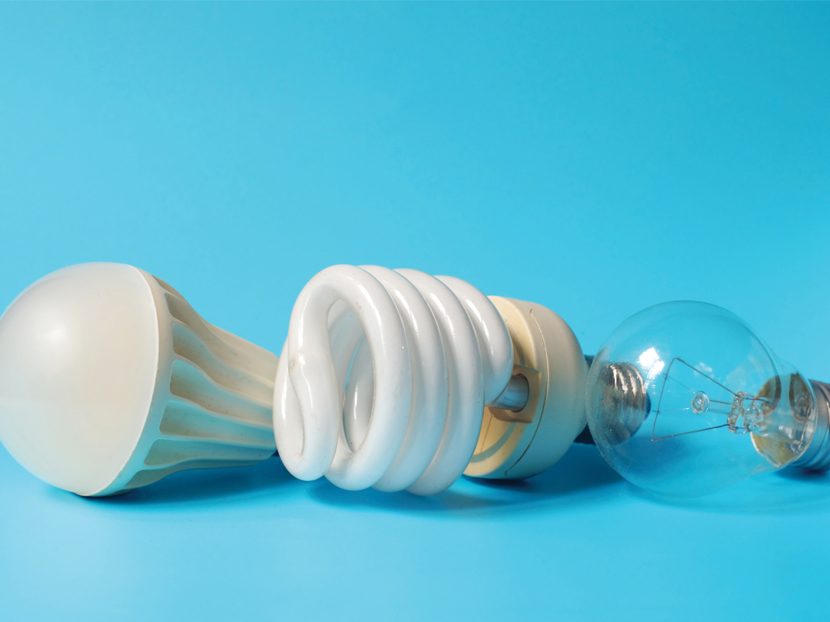Moving from Commodity to Custom
Is innovation causing you to reexamine the way you look at your distribution business?

In a recent episode of my podcast, I had the opportunity to speak with the owner of a lighting distributor based in northern California. Over the course of our conversation, we talked about the changes she had seen in the products her company is bringing to market.
In the early part of her career, the lighting industry was focused more on the diversification of fixture styles and the bulbs were more of a commodity product. Over the years, innovations in technology have revolutionized the simple light bulb and forced her organization to reinvent how they manage those products.
How have changes in your products led to a reinvention of your distribution process?
Innovation Drives the Market
I have had the privilege of knowing a few distributors in the lighting space. When I was first exposed to this industry, many distributors were turning to offshore manufacturers to drive down the price point of the bulb. I would see them bring in pallets and even containers of product. There was never a worry of obsolescence because there had been very little innovation in these items over the years.
Then changes, driven by demand for reduced power consumption, began to trickle into the market. Although fluorescent tubes were nothing new to the commercial space, compact fluorescents and even LED products started to appear at trade shows. The higher costs of these new SKUs made it difficult to imagine them taking over the traditional incandescent products, but the early adopters began to take notice.
Forward-looking distributors began to take notice as well. In regions where electricity costs were high — think island areas such as the Bahamas — interest began to build. As these products became more stable, even more moderately priced energy regions began to demand more efficient products.
Fast forward a few years and I think you all know where the story goes. The demand for innovative, low-energy-consumption lighting products has become mainstream. This change in the market has forced distributors in this space to reimagine how they buy, sell and source their entire warehouse.
Is innovation causing you to reexamine the way you look at your distribution business?
Several years ago, I was invited to speak on a friend’s podcast, “Get a Grip on Lighting.” Catchy title for a very niche show. In his inaugural episode, we dove into the inventory management challenges caused by the shift from commodity-based incandescent bulbs to rapidly changing LED products.
As mentioned earlier, his industry had grown up on the traditional replenishment models and turn ratios of a stable product. You would feel relatively safe buying higher quantities, at a lower unit cost, and be willing to sacrifice a few turns in the process.
Then a curious thing happened. Early LED bulbs were expensive, so you were less willing to gamble on quantity. Even when you thought you had a stable product, innovations would create a significant price drop in the marketplace. If you weren’t careful, items on your shelf could become devalued overnight. The idea of bringing in anything over three months of inventory felt like a night at the casino.
Furthering the challenge was the rapid obsolescence of traditional products in the marketplace. Those distributors who brought in a boatload, literally containers, of commodity products became very nervous as they saw their warehouse full of cash rapidly lose value. Imagine holding a warehouse full of Greek drachma in the last decade.
Those distributors who bet heavy were about to realize what gambling is all about. When you are dealing with a product mix that is going through a technological revolution, the old Gordon Graham replenishment formulas just don’t apply.
Although this transition was rough for many old-line lighting distributors, there were few bright lights (pun fully intended!) in the business. As my guest shared with me, this change in technology allowed her company to reduce the number of overall SKUs in its offering. By focusing on fewer products, which allowed for improved margin percentages, her company could redirect its energy toward customer consultation and design.
Changing Go-To-Market Strategies
With this innovation-driven product mix, her sales teams needed to change their go-to-market strategy. In her words, “We are no longer in the lighting business. We are really in the electronics business.” If you think about it, she is absolutely correct. LED stands for “light-emitting diode.” It isn’t a wire filament anymore. Only in shape does the bulb resemble its predecessor.
Think about what manufacturers can do with these devices. They have an extraordinary range of options in color, lumens and function. What was once only manipulated by a switch, or dimmer if you wanted to get fancy, can now be controlled by a mobile device.
The lighting sales professional of today has to think in terms of mood and environment as well as energy consumption. This may feel a bit daunting for the old-school peddler, but it does offer a hidden benefit for the organization — attraction.
In every distribution vertical I work in, the desire to attract new talent is what keeps everyone up at night. How do we draw the newer generations to distribution? We don’t have the greatest reputation for providing an innovative work environment.
This perception is changing in the lighting industry. With these innovations in product, younger generations are taking notice. Light bulbs are not sexy, but electronics are. LED represents technology. Anything that can be manipulated by a mobile device is cool and fun. In the race to attract new talent, consider who we are up against?
In every vertical market, there is an opportunity to champion innovation. Some of us are dragged into it, like the lighting folks, but many of us have to go looking for it. Focus on those products that put you toe-to-toe with your desired customer base. Get in their heads. What would make their application more fulfilling and exciting? Take a look at the products in your warehouse. What items are due for a major overhaul?
Is anyone out there paving the way? Perhaps you should sit up and take notice.





